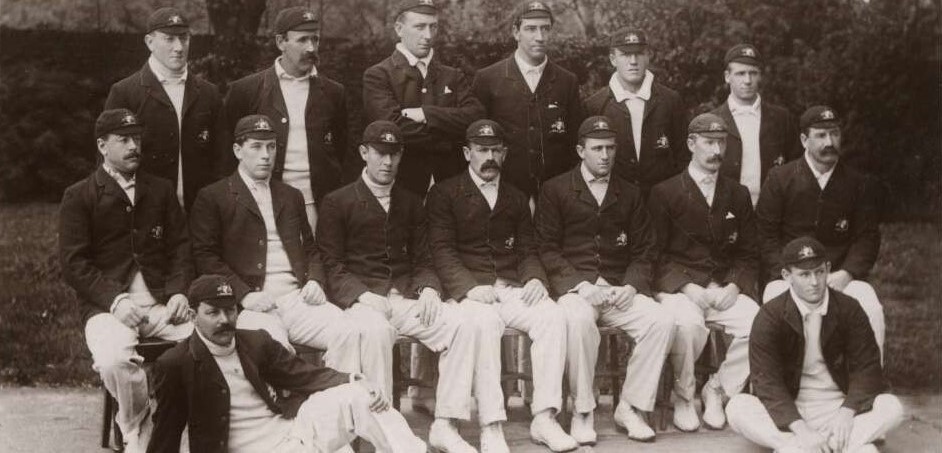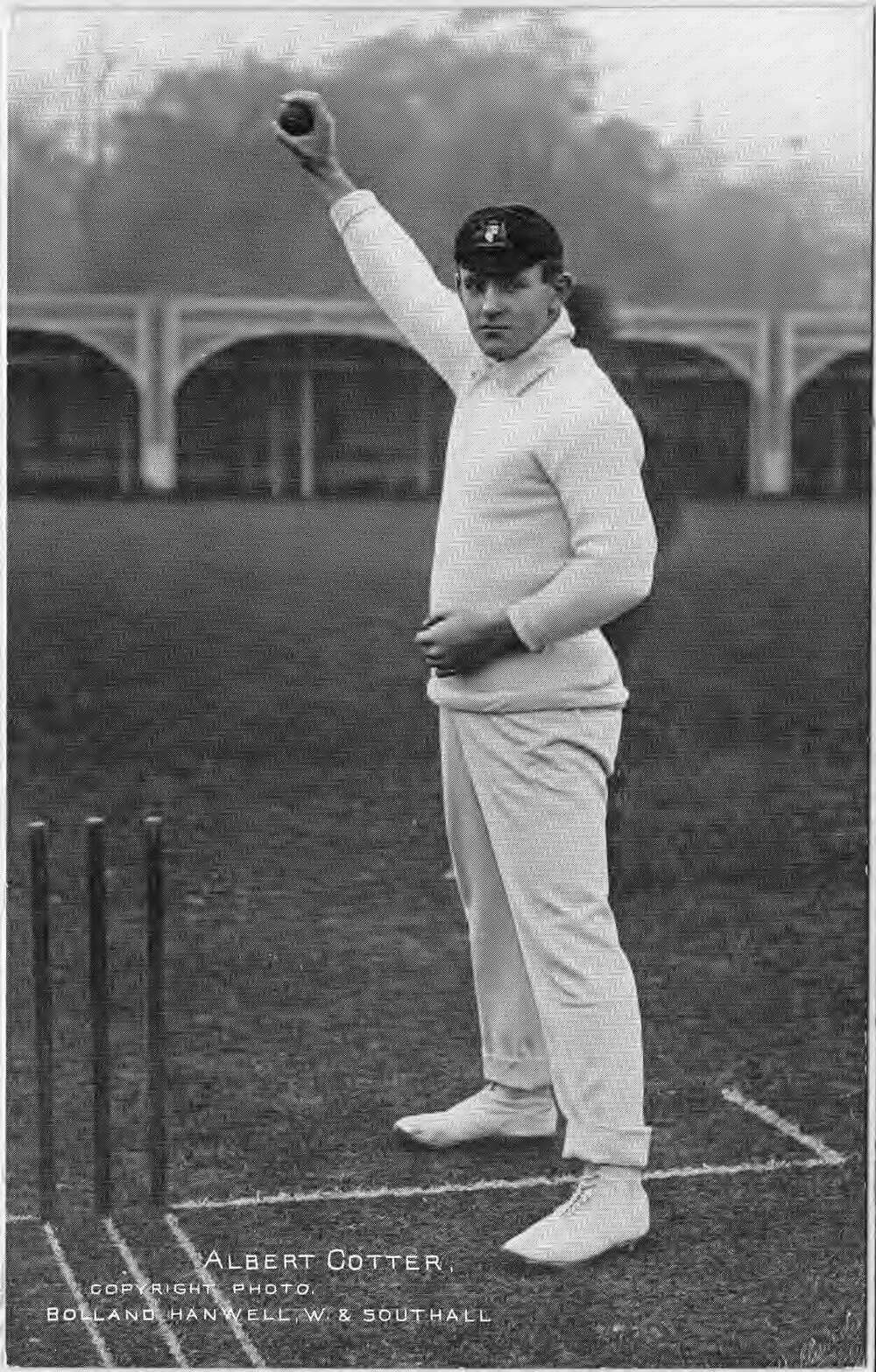Location
'Monteith' 266 Glebe Point Road, Glebe, Sydney NSW 2037
Glebe is on the land of the Gadigal people of the Eora nation.
Accessibility
Wheelchair accessible
About Albert (Tibby) Cotter
Australian test cricketer Albert 'Tibby' Cotter was one of Australia's earliest masters of the art of fast bowling. He played in 21 tests between 1903 and 1911, taking 89 wickets.
After enlisting in the Australian Imperial Force (AIF) in 1915, Tibby's image was used on an AIF recruitment campaign poster. He served briefly in Gallipoli and later in Palestine, where he was commended for his 'fine work under heavy fire'.
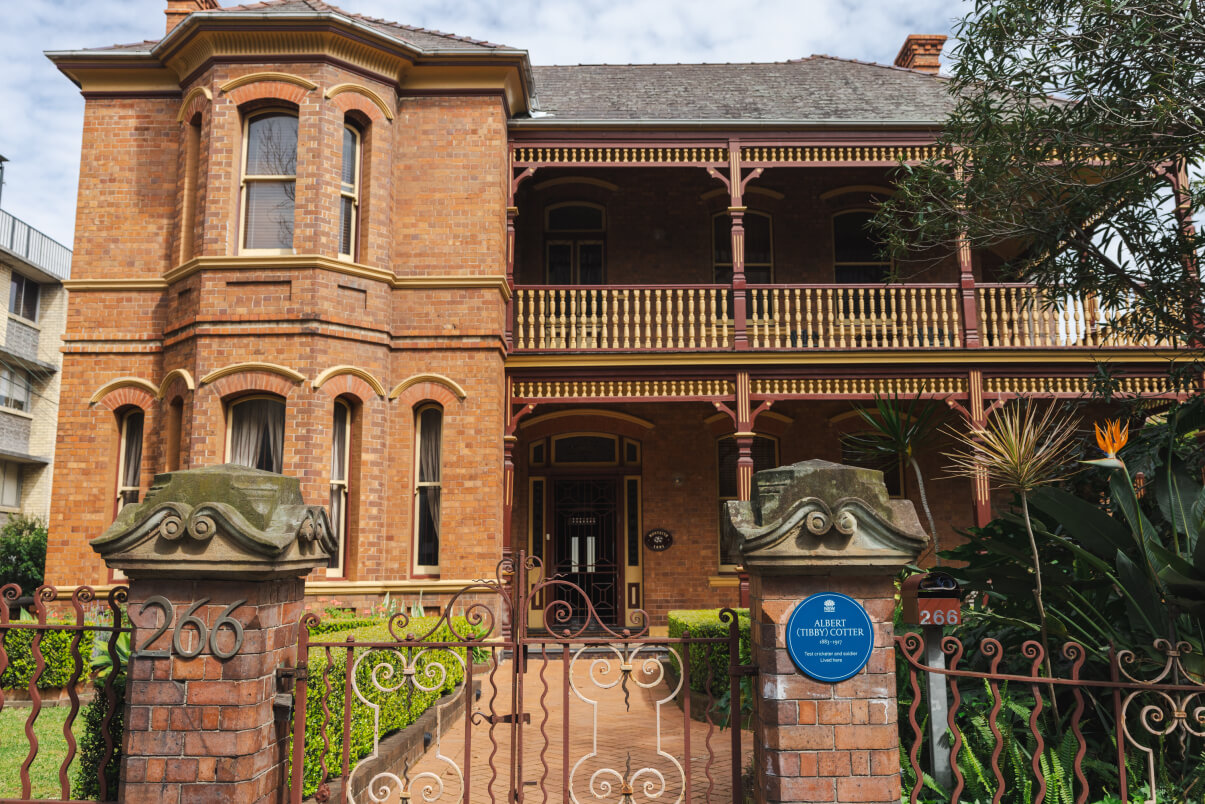
Tibby Cotter’s Blue Plaque at Monteith
The early days
Albert 'Tibby' Cotter was born in Sydney on 3 December 1883. The Cotter family moved to Glebe in 1889 when Tibby's father, John Henry Cotter, purchased a site at Glebe Road (now Glebe Point Road) and built 'Monteith' for his wife Margaret and 6 sons. Tibby lived at Monteith with his family until 1915, when he enlisted in the Australian Imperial Force (AIF).
Nicknamed 'Tibby' because of his small stature, he attended Forest Lodge Public School and Sydney Grammar School, where his talent as a bowler soon became evident.
Tibby joined the Glebe District Cricket Club in 1900 and established himself as an exceptional pace bowler and hard-hitting batsman. He earned his place in the NSW Cricket XI the following year at age 18.
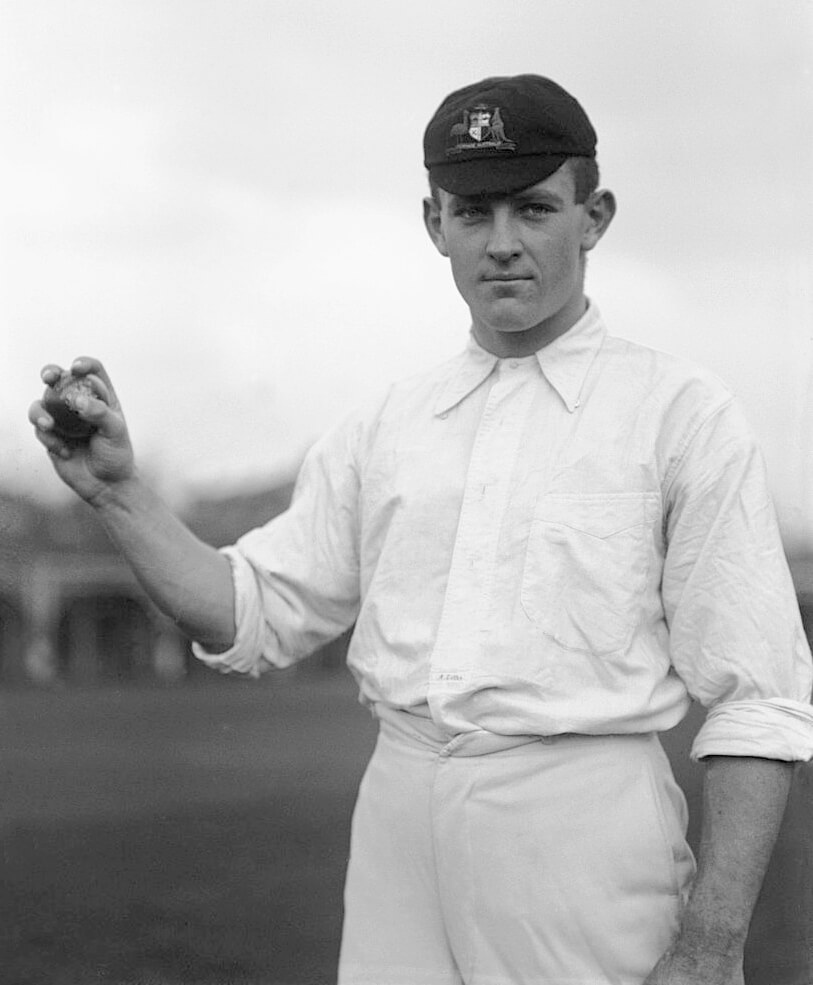
Albert Cotter, New South Wales and Australia, circa 1905
Bowling for Australia
Aged 20, Tibby was selected to bowl for Australia against England’s touring team in the 1903–04 season. He toured England with the Australian team in 1905 and 1909. Tibby could bowl for long spells and was a good fieldsman. During one memorable summer, he snared an impressive 22 wickets against the South African side.
The bowler’s promising test career came to an end in 1912 after he and 5 other senior players demanded that the newly formed Australian Board of Control for International Cricket Matches allow players to elect a manager from their own ranks. The board refused and the 'rebellious six' – Warwick Armstrong, Hanson Carter, Clement Hill, Vernon Ransford, Victor Trumper and Cotter – declared themselves unavailable for selection for the next tour of England. Tibby never played for Australia again.
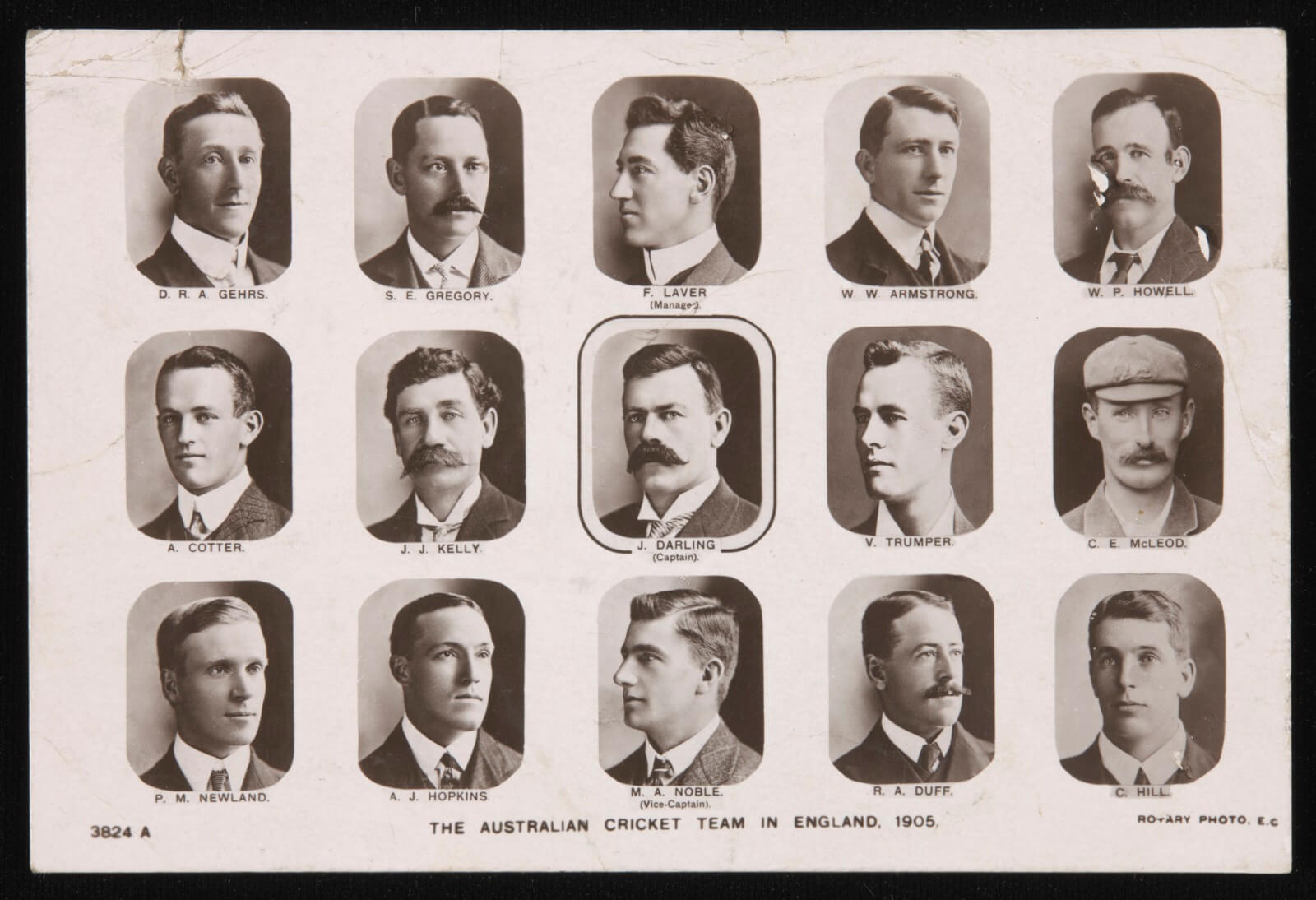
Photographic postcard of the Australian Cricket Team in England, 1905
Military service
Tibby joined the AIF in April 1915. He served in the final months of the Gallipoli campaign with the 3rd Reinforcements, 12th Light Horse Regiment. Tibby was not a particularly disciplined soldier and was reprimanded for drunkenness shortly after arriving in Gallipoli. Despite this, he soon earned a reputation for bravery. After his unit was deployed to Palestine, he was commended for his 'fine work under heavy fire’ during the second battle of Gaza. The official history of the battle remarked that ‘he behaved in action as a man without fear'.
Driven by falling enlistment numbers, in 1917 the AIF developed a series of recruitment posters featuring sportsmen, including one of Tibby, which encouraged sportsman to enlist in a ‘sportsman’s unit’. Despite the AIF's hopes, the Australian campaign did not prove as popular as the English campaign that inspired it.

An AIF recruitment campaign featured Tibby, Linton Slide, 1917
A true sportsman
Tibby Cotter was killed while acting as a mounted stretcher-bearer on 31 October 1917 at the third Battle of Gaza. He had taken part in the most famous mounted action of the war, the Light Horse charge to capture the wells at Beersheba.
Tibby is remembered as a fast bowler, an ANZAC digger and an undeniable larrikin. In a thoughtful obituary, his friend and fellow cricketer Peter McAlister reflected on Tibby’s charming nature.
He was a most agreeable companion on the [1909 Ashes] tour, and was exceedingly popular among the English cricketers and supporters of the game. He was naturally easygoing, with a smile for everybody. He was also full of humour.
References and further reading
- Australian War Memorial (2020) Fifty Australians – Tibby Cotter, Australian War Memorial website, accessed 10 June 2025.
- Bonnell M and Sproul A (2012) Tibby Cotter: Fast bowler, larrikin, Anzac, Walla Walla Press, Sydney, National Library of Australia website, accessed 10 June 2025.
- Collingwood L and Stephenson I (2023) Remembering Tibby Cotter, The Glebe Society Inc. website, accessed 10 June 2025.
- Heritage NSW (n.d.) Monteith, NSW State Heritage Inventory website, accessed 10 June 2025.
- McAlister PA (1917) Albert (Tibby) Cotter, Obituaries Australia, National Centre of Biography, Australian National University website, accessed 10 June 2025.
- Nicholls P (24 April 2016) 'Are we downhearted? No!' The legend of Tibby Cotter, The Roar website, accessed 10 June 2025.
- Walsh GP (1981) Albert (Tibby) Cotter (1883–1917), Australian Dictionary of Biography, National Centre of Biography, Australian National University website, accessed 10 June 2025.
